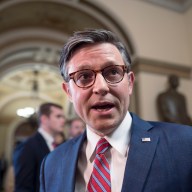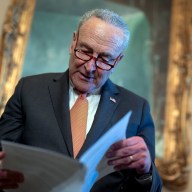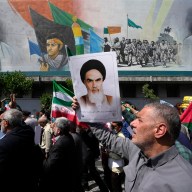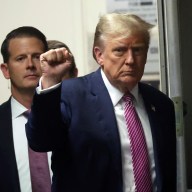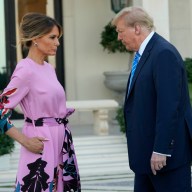BEIJING – To mark 60 years of communist rule China put together its biggest-ever military parade: hundreds of thousands of marchers, batteries of goose-stepping soldiers and weaponry from drone missiles to amphibious assault vehicles. Everyone else, though, was asked to stay home.
China blocked off its city centre closing everything from Tiananmen Square to the Forbidden City as it readied for Thursday’s celebration, asking residents to tune into the events by television.
Festivities surrounding the founding of the People’s Republic will feature President Hu Jintao reviewing chanting troops, a flyover by domestically made fighter jets and tens of thousands of students flipping cards to make pictures.
Sixty floats celebrating China’s manned space program and other symbols of progress will follow the military convoy along the parade route through Tiananmen Square.
The display is meant to underscore what the leadership calls the “revival of the great Chinese nation,” and the plans stirred both patriotism – and some unease at the pomp and firepower.
“China’s international standing has risen in an unprecedented way. We feel extremely proud of the increasing strength and prosperity of our motherland,” Premier Wen Jiabao said in a nationally televised speech on the anniversary’s eve.
The feel-good, if heavily scripted moment is tapping into Chinese pride surrounding the country’s turnaround from the war-battered, impoverished state the communists took over in 1949 to the dynamic, third-largest world economy of today.
The buoyant mood glosses over the country’s gut wrenching twists – the ruinous campaigns of revolutionary leader Mao Zedong that left tens of millions dead – as well as its current challenges: a widening gap between rich and poor, rampant corruption, severe pollution and ethnic uprisings in western areas of Tibet and Xinjiang.
In a sign of concern about the social ferment unleashed by free-market reforms, the government has suggested people in Beijing stay home to watch the parade on television.
Security in Beijing has been intensifying for weeks over worries that protests, which are common in China, or an overexuberant crowd might mar the ceremonies. Parts of central Beijing were sealed off and businesses were told to shut down, beginning Tuesday.
“How many hundreds of millions are being spent on the National Day troop review? Can you tell the taxpayers?” the prolific blogger Li Huizhi, a small businessman in southern Guangzhou city wrote on his popular blog Sunday. “Aren’t the possibly tens of billions in money spent perhaps a bit of a disservice to the people? Because in today’s China, there are countless places more in need of this money.”
Explanations vary for why such elaborate festivities are being staged. Among them is the speculation that 60 is an auspicious number that plays well with Chinese who say it traditionally represents the full life of a person. The country’s leadership has avoided mention of anything to do with superstition, though.
The government has customarily held military parades on 10th anniversaries. With China riding high in the world and feeling good about itself after the Beijing Olympics, the 60th was the Hu administration’s chance to score popularity points.
Early this year, before China’s economy rebounded from the global downturn, authorities promised only a modest celebration in keeping with the gloomy times.
The parade is now billed by state media as China’s largest-ever display of weaponry, reminiscent of the Soviet Union, and it comes with the mass synchronized performances usually associated with North Korea. Alongside the 80,000 card-flippers making 41 pictures, another 100,000 civilians are to accompany the floats, many of them with kitschy displays of computers and signs of industry.
Some 5,000 goose-stepping soldiers who have rehearsed for five months are to accompany the armaments – new unmanned aerial drones, amphibious fighting vehicles and the new DH-10 land-based anti-ship cruise missiles.
“I wonder what Chinese leaders are thinking? For more than 15 years they have been denouncing those who call China’s rise a threat. Now they put on this display of military hardware, with goose-stepping soldiers to match. Aren’t they confirming the China Threat?” said Minxin Pei, a professor of government at Claremont McKenna College in California.
The People’s Liberation Army in its newspaper early this year said the event’s meaning was clear: “This military parade is a comprehensive display of the Party’s ability to rule and of the overall might of the nation.”
Geremie Barme, a China scholar at Australian National University who has studied past National Day parades, said the displays are typically aimed at the domestic audience – Communist Party officials and ordinary Chinese. “It is meant to educate, excite, unite and entertain. If a tad of ‘shock and awe’ is delivered around the world, all well and good,” he said.






